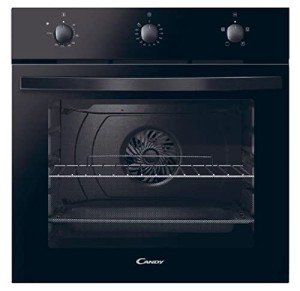
Best Single Oven
Add a review FollowOverview
-
Founded Date 1908 年 11 月 8 日
-
Sectors Animation
-
Posted Jobs 0
-
Viewed 7
Company Description
5 Killer Quora Answers To Single Fan Oven
Understanding the Single Fan Oven: A Comprehensive Guide
The culinary world has evolved considerably for many years, with home appliances becoming more advanced and effective. One such advancement is the single fan oven, a kitchen staple for lots of home cooks and expert chefs alike. This short article explores the complexities of single fan ovens, their benefits, and practical pointers for usage.
What is a Single Fan Oven?
A single fan oven, likewise called a stove, is designed to prepare food uniformly using a fan and an internal exhaust system. Unlike conventional ovens that rely mainly on convected heat, single fan ovens circulate hot air around the food, guaranteeing a constant temperature level throughout the cooking process. This function improves cooking effectiveness and minimizes cooking times compared to basic ovens.
How Does a Single Fan Oven Work?
The mechanics of a single fan oven are uncomplicated but innovative. The oven comprises numerous essential elements:
- Heating Element: This produces the heat needed for cooking, typically located at the top and bottom of the oven.
- Fan: Positioned at the back of the oven, this component distributes the hot air around the food.
- Control board: It permits users to set the temperature and cooking time.
- Thermostat: This gadget displays and keeps the preferred temperature level throughout cooking.
When the oven is switched on, the heating elements heat up, and the fan starts to flow the heat equally. This makes sure that all sides of the food are exposed to hot air, resulting in better cooking outcomes– particularly for baked products.
Benefits of Using a Single Fan Oven
Single fan ovens boast numerous benefits, making them popular amongst culinary enthusiasts. The main benefits consist of:
1. Even Cooking
- The distributing air avoids hot and cold spots within the oven, permitting food to prepare equally. This is especially advantageous for baking pastries, cakes, and bread.
2. Decreased Cooking Time
- By circulating hot air, stove normally cook food quicker than traditional ovens. This can result in time savings in meal preparation.
3. Energy Efficiency
- Single fan ovens usually use less energy, as they can prepare food more rapidly and may need lower temperature levels.
4. Browning and Crisping
- The airflow in a single fan oven helps attain a desirable golden-brown surface on meals, particularly casseroles, roasted vegetables, and meats.
5. Versatility
- These ovens can a variety of cooking styles, from roasting and baking to broiling and reheating leftovers.
Comparing Single Fan Ovens with Traditional Ovens
To better comprehend the special qualities of a single fan oven, it’s helpful to compare it to a standard oven. The table below summarizes essential differences:
| Feature | Single Fan Oven | Conventional Oven |
|---|---|---|
| Cooking Method | Convection (circulating air) | Radiant heat |
| Cooking Time | Shorter | Longer |
| Temperature level Consistency | More constant | Can have hot/cold areas |
| Energy Consumption | Typically lower | Greater |
| Suitable for Baking | Much better browning and increasing | Helpful for roasting |
How to Use a Single Fan Oven
For ideal outcomes with a single fan oven, consider these useful suggestions:
-
Adjust Temperature and Cooking Time:
- When utilizing a Single Fan Oven (https://git.daymele.Com/best-single-Oven-uk5021), lower the cooking temperature by about 20 ° F (10 ° C) compared to conventional dishes. As a rule of thumb, check for doneness a bit earlier than stated.
-
Use Shallow Baking Pans:
- Shallow pans enable much better airflow, promoting even cooking and browning.
-
Prevent Crowding the Oven:
- Ensure appropriate area between meals for air circulation.
-
Turn Baking Sheets:
- For multiple trays or pans, turn them halfway through cooking to make sure even heat distribution.
-
Keep the Oven Door Closed:
- Each time the door is opened, heat escapes; avoid unneeded openings during cooking.
FAQs About Single Fan Ovens
-
Can I utilize routine dishes in a single fan oven?
- Yes, but it’s recommended to adjust both the temperature and cooking time for ideal results.
-
Are single fan ovens more expensive than standard ovens?
- They can differ in price, however while some designs may be more pricey, their performance can result in cost savings on energy costs.
-
Can I bake several items simultaneously?
- Yes, however spaced out properly for even air flow. It’s advisable to turn trays midway through cooking.
-
Do single fan ovens come with extra functions?
- Lots of designs feature self-cleaning alternatives, several cooking modes, and wise innovation for enhanced convenience.
-
Is upkeep different for single fan ovens?
- Maintenance is similar however bear in mind the fan and guarantee it’s kept clean for optimum efficiency.
The single fan oven stands apart as an exceptional alternative for those seeking to improve their cooking abilities and performance in the kitchen. Its capability to prepare food equally and more quickly can change the cooking experience, making even the most complex dishes simple to execute. By comprehending how to utilize a single fan oven successfully and leveraging its advantages, home cooks and expert chefs can take pleasure in a more enjoyable and efficient cooking journey.



